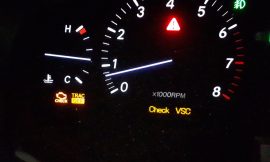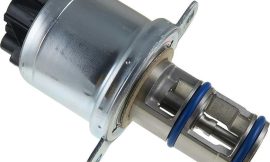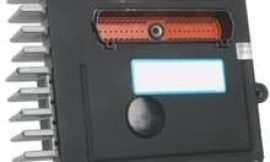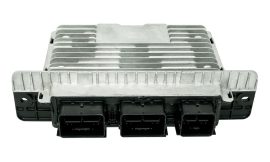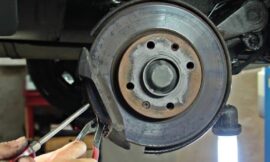Last updated on March 29th, 2022 at 10:15 pm
Code P0136 trouble code is one of the many error codes available in the onboard diagnostic (OBD) codes. The diagnostic use various codes to monitor and track engine performance. P0136 deals with the oxygen sensor circuits and low voltages in Bank 1. The oxygen sensors are designed to produce voltages between 0.1 mV and 0.9mV. As part of the powertrain control module (PCM), the engine control unit (ECU) monitors oxygen sensors and voltage reading. It then increases or decreases fuel injection by determining whether the exhaust is lean (low oxygen) or rich (high oxygen). Each model has a unique fuel-to-air ratio that the ECU uses to resolve fuel injection issues. If the exhaust is running lean, the oxygen sensors will have a lower reading triggering code P0136.
How important is code P0136?
Code P0136, also known as oxygen sensor circuit low voltage OBD code, is one of the many codes in a car’s computer. The engine control module (ECM) uses reading from oxygen sensors and monitor different elements that affect ignition, combustion, transmission and engine performance. This code deals explicitly with the fuel/air ratio in the exhaust and is used to determine if the O2 sensors behind the catalytic chamber in Bank 1 are malfunctioning. Your car could still run, despite having faulty inputs, and this can result in more damages in other parts of the engine. The code also makes it easier to troubleshoot the problem and fix it. It is recommendable to consult a mechanic whenever you have the P0136 trouble code. Check out the P0113 Trouble code while you’re here!
What causes code P0136?
Several factors affect fuel injection and ratios, ranging from mechanical breakdowns and corrosion of components to electrical shorts, leaks, loose connections and faulty computer. The common triggers of code P0136 include:
• Malfunctioning O2 (oxygen) sensors 2 in Bank 1
• Exhaust leaks close to O2 sensor 2
• Open circuit resistance resulting from corroded oxygen sensor connectors
• Broken or frayed wiring
• Intake leak
• Shorting O2 sensor signal circuit
Symptoms the of P0136 trouble code
There are a few symptoms that suggest the P0136 trouble code. However, these symptoms may also suggest other error codes. Many OBD trouble codes overlap, as they are controlled by the same PCM (powertrain control module). The PCM can also be faulty, setting a series of trouble codes, including P0136. The common symptoms include:

Lit check engine light on the dashboard
The check engine light goes on to suggest a problem with the engine control module and is triggered by a series of trouble codes, including P0136. The problem may also occur in the transmission control unit (TCU). Usually, mechanics use the onboard diagnostic scanner tool to reset the error codes and determine which trouble code has been triggered. If the check light engine comes on and off or stays illuminated, it may just be the P0136 code.
Poof fuel economy
Oxygen sensors provide input that the ECU uses to determine fuel injection into the combustion chambers. As such, faulty sensors will result in bad ECU inputs, which can cause combustion and transmission problems. If your car is consuming more gas than usual, the problem may stem from fuel/air ratio problems and faulty oxygen sensors. Besides decreased MPG (miles per gallon), you may also notice reduced engine power.
Increased tailpipe emissions
Tailpipe emissions are frequent, especially among ageing cars. The emissions are also crucial for determining injection and transmission issues. Increase in tailpipe emission usually suggests problems with oxygen sensors and the P0136 trouble code. The emission may also characterize a peculiar colour or scent. If this is the case, you need a quick check by an experienced mechanic to pinpoint and correct the problem.

Misfiring engine
Engine misfiring can result from bad timing, dead battery and faulty alternators, poor inputs or insufficient oxygen, among other reasons. If your O2 sensors in Bank 1 are faulty, your engine may misfire from time to time. The longer you wait, the worse it gets. Improper fuel injection can cause misfiring when starting the engine or result in erratic performance and transmission.
Troubleshooting code P0136
Diagnosing and fixing P0136 trouble is best left for experienced mechanics, but you can use the OBD2 scanner to check for various faults. First, the mechanic will locate the O2 sensor 2 in bank 1 and then monitor the oxygen sensor’s data and confirm the problem is from low voltage. They will also check the connectors for corrosion and contaminants like oil and coolant that leak from the engine. This may require cleaning and replacing the sensors or engine control module unit. The mechanic will also check the sensor heater circuit to determine if resistance is within the specification needed. Other inspections are for exhaust leaks in front of O2 sensor in Bank 1 and damaged catalysts.
Conclusion
There are many causes of code P0136, including inconsistencies in all factors that influence the airfuel ratio and fuel injection. Whether it is a heated oxygen sensor, problems with the wiring harness or O2 sensor circuit malfunctioning bank, you should get your car checked as soon as you can. If you take longer to diagnose and fix the issue, you may end up damaging several other components. The problem might be a faulty control module that causes wrong inputs and errors, so there is no need to panic. Usually, P0136 O2 sensor circuit malfunctioning stems from nothing critical. Sometimes it is something as simple as resetting the error codes may resolve the issue, if it is a faulty computer.
FAQ’s
This is an OBD II trouble code that indicates the exhaust is running on low oxygen. It is triggered when the oxygen sensor (o2 sensor 2) in Bank 1 malfunctions.
There are two sensors in a typical singe-bank 4-cylinder engine. The front O2 sensor is also referred to as upstream or sensor 1 and is installed before the catalytic converter. The second sensor installed after the converter is the downstream or sensor 2. Bank 1 sensor 2 is the oxygen sensor to the right of the catalytic coveter on the cylinder marked as #1 (bank 1).
Sensor circuit malfunction is when there is a problem in the wiring harness, connectors or other parts of the circuit that causes it not to work correctly. A short, corrosion or leak may cause the circuit to malfunction and provide inaccurate inputs.








